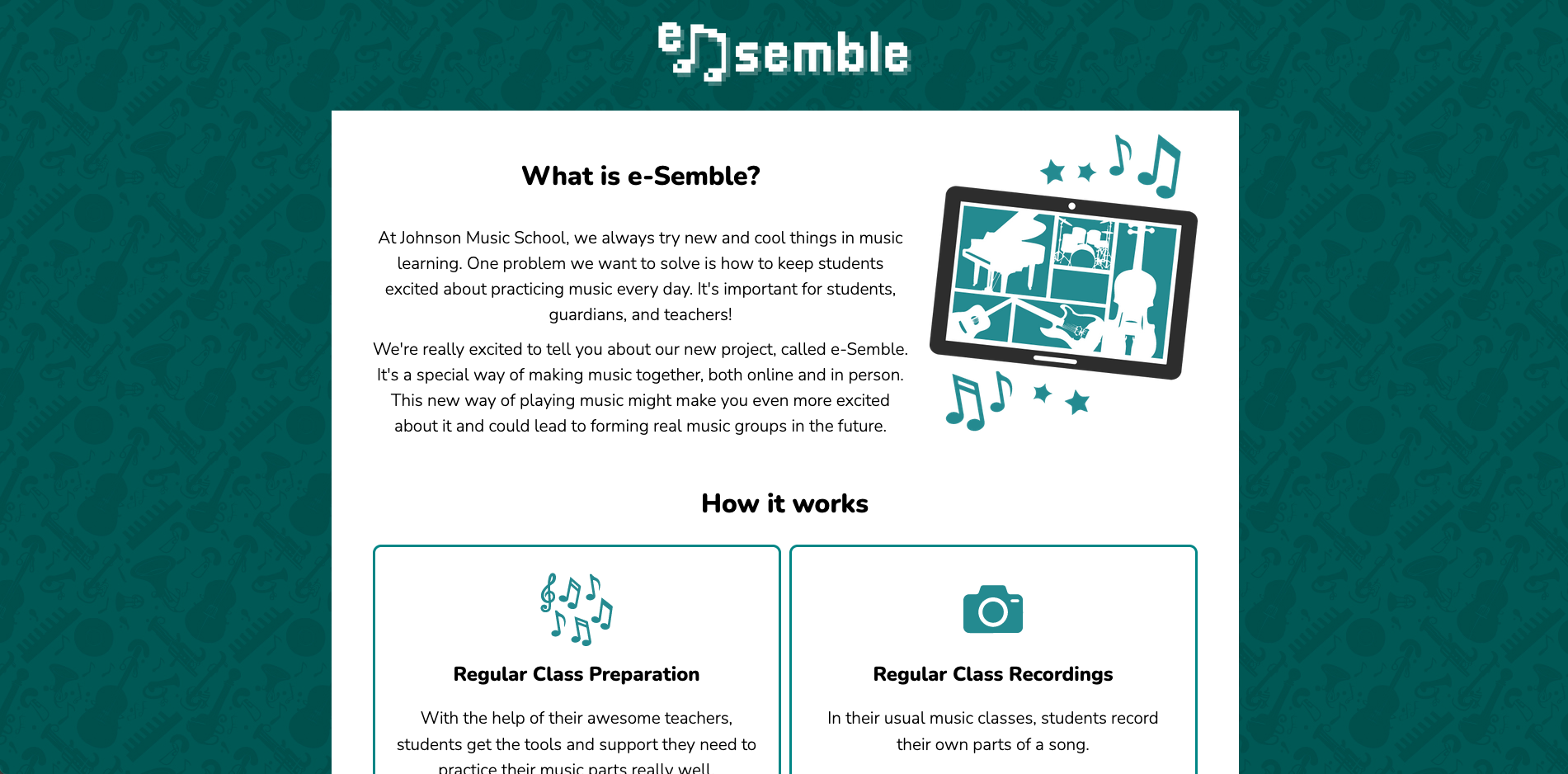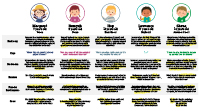Preparation
Empathise
The Empathise stage has been fulfilled, and in adherence to the iterative nature of the Design Thinking framework, I anticipate revisiting this stage when necessary. In fact, my plan entails an ongoing process of empathising with stakeholders throughout the entire design journey. The following serves as a record of the activities completed thus far.
Stakeholder Conversations
In my role as the school administrator and receptionist, I have had the opportunity to engage in substantial conversations with guardians while their students are in class. These candid and insightful discussions have been easily accessible due to the trust that guardians place in my commitment to improving the school and student experience.
Similarly, both I and my fellow teachers share a personal rapport with our students within the classroom setting. These students confide in us with their unfiltered opinions, and many express their thoughts openly when requested.
Over the past several months, I have engaged in candid dialogues with students and guardians alike, exploring topics of practice, motivation, and expectations. This process has enabled us to gain a comprehensive understanding of our stakeholders, documenting their needs, desires, and pain points. However, drawing from my experience in User Experience (UX) design, I have learned that what participants say may not always unveil their underlying sentiments. Therefore, we rely on an additional method of empathy.
User Observation
As educators, our vigilance extends beyond the technical correctness of scales and musical pieces. This heightened attention has been particularly pronounced in recent months as we've undertaken the observation of our students through the lens of our wicked problem. Drawing from my background in UX design, I am aware that participants' behaviours, actions, and reactions frequently offer invaluable insights into their underlying needs.
Additionally, we've observed the interactions between students and their guardians in the music school setting. We've evaluated the extent to which students communicate about their lessons with their guardians, the degree of inquisitiveness exhibited by the guardians, the level of enthusiasm with which lesson content is discussed, and other aspects.
While this data has been recorded, it is accompanied assumptions of its deeper significance, an interpretation substantiated by data derived from informal conversations.
Analyse Data
The raw data gathered was then handled using some UX tools and techniques.
The findings from these UX methods allowed us to systematically gather data on the stakeholder experience regarding motivation and practice.
Define
The Define stage has also been fulfilled. As previously emphasised, given the iterative nature of Design Thinking, we maintain an flexible approach and are prepared to revisit and refine definitions as required.
Data Driven Insights
Fading Aspirations
Our data shows that, initially, students start learning with genuine interest but later feel restricted by their choice, leading to a decline in motivation. Students often initiate their learning journey by observing others, often through YouTube. However, the aspiration to become YouTube performers fades as they encounter basic lessons and less engaging songs. Our students are not alone in this phenomenon, as similar experiences are recorded in literature (Gaffe, 1990; Iambshead, 2002; MacIntyre et al., 2018; McHugh, 2016; Rife et al., 2001, Schatt, 2018; Schatt, 2023)
Costly Performance Opportunities
As we near our year-end concert, a significant observation stands out: students' practice and motivation rise when preparing their chosen pieces. These selections are often made collaboratively with students to ensure ongoing passion. Gaffe (1990) states that recitals lead to improved attitudes, successes, motivation for future goals, and boosted self-esteem. This is reflected in our observations, where the prospect of performing in front of peers and family appears to be a powerful motivator.
However, organising concerts historically posed challenges for us. Our concerts prioritise enriching the experience for students over profitability, often resulting in financial losses. As a result, the school is limited to one concert per year. Only 42% of students chose not to participate this year, with a standout reason being that they didn't enjoy the instrument enough to work towards a goal "that far away". Perhaps this could be mitigated with more frequent performance opportunities.
Ensemble Scheduling Pains
Ensembles foster a common goal, accomplishment, and unity through collaboration. They enhance communication skills, promote participation, improve self-confidence, and empower students (Hanrahan, 2018). However, most students and guardians are available only one day a week. Even students who attend the same school face this scheduling challenge within school hours (Cayari, 2015), making it particularly challenging for us.
While ensembles have the potential to foster shared accomplishment and unity, a challenge lies in accommodating the schedules our students and their guardians.
Stakeholder Involvement
The solution will be developed collaboratively alongside students and guardian stakeholders, ensuring that their input is incorporated into the design and implementation of the initiative. As explored in Design Thinking, participants creating a design solution were often made up of stakeholders that the solution affected (Koh et al., 2015; Meinel & Krohn, 2022).
The aforementioned target audience is our intended demographic for participation in the e-Semble design program. Students are often more motivated and engaged when they are involved in the learning design process (Collis & Moonen, 2006). Contributing to the development of learning resources gives students a sense of ownership and responsibility. Of course, this does require a level of guidelines and expectations (Collis & Moonen, 2006) to ensure that educational goals are being met. The proposed solution will further explain this venture. As our goal is to raise motivation levels and have students re-ignite their passion for music, having our students as co-developers is certainly a step in the right direction.
Motivation for ensembles comes from a basic psychological need for autonomy, competence, and relatedness (Evans, 2015) and are particularly relevant in the context of music ensembles (Williams et al., 2023). By providing students with opportunities to make choices about their own musical experiences, which we aim to do, we can fulfil the need for autonomy. By including students of all instruments, skill levels, and levels of engagement, we show that all students are capable of being part of a hybrid ensemble, no matter what part they play. This will fulfil the need of competence. Finally, the very idea of performing with others, albeit virtually, should fulfil the need for relatedness.
Proposed Solution
In response to the challenges identified in private music education, we introduce a hybrid ensemble program designed by all stakeholders. This solution embraces a combination of elements aimed at rekindling student motivation and practice habits, offering more accessible performance opportunities, and promoting a sense of unity and shared accomplishment. Consistent with the principles of Design Thinking, this proposed solution remains open to evolution as we progress through subsequent stages that actively involves stakeholders. It's key components include the following aspects.
Hybrid Ensembles
Students will work on and film their parts during regular lessons. This approach allows students to collaborate seamlessly without extensive additional scheduling and provides an inclusive platform for diverse performances. It also entices them to look ahead to an imminent performance that will be combined with other students.
Virtual Performance Opportunities
Through online platforms, such as the aforementioned favourite, YouTube, students can participate in virtual performances, reaching a broader audience while maintaining their motivation and aspirations to showcase their musical talents. This concept has been addressed and explored in scholarly works, including Savage (2017) and Cayari (2015, 2018, 2021).
Technology Use
The suggested solution operates on the premise of utilizing certain technologies, which have been previously employed in comparable endeavors. These technologies encompass recording equipment like cameras and microphones, recording software such as Audacity, post-production software like Power Director Pro, and publishing platforms such as YouTube or Facebook (Cayari, 2021; Holter, 2020; Paparo, 2022).
Additional technologies may encompass tools for collaborative communication and idea sharing, like Padlet or a private Facebook Group, online survey and questionnaire platforms, and data collection tools. The selection of these technologies will be determined by our stakeholders during their ideation phase, aligning with Medvinsky's (2017) emphasis on ensuring that technology integration is purposeful and pertinent to the learning objectives, rather than merely for the sake of technology utilization.
An imminent technology-related issue brought up here pertains to the distribution of these musical ensembles on public platforms like YouTube. Cayari (2021) cautions against placing students in situations that may breach laws or policies, potentially jeopardizing their digital safety. Given our target audience, child safety is a significant technological concern that demands our attention, and thus, we must maintain transparent communication with guardians to ensure that our actions align with appropriate safeguards.
Recruitment
Dedicated Webpage
In our pursuit of inclusive and student-centric music education, we have developed a dedicated webpage that serves as an information hub for our Hybrid Ensemble Program. This webpage is designed to provide prospective student participants with insights into the program's design process, its objectives, and the expected outcomes over two terms. Guardians are then prompted to visit this website that you are currently on for deeper explanations.
 Click to view the webpage
Click to view the webpage
Empowering Stakeholders
By offering a clear and detailed overview of the program's timeline, activities, and objectives, the webpage empowers potential participants to make informed decisions regarding their involvement. Students, in particular, gain a comprehensive understanding of the responsibilities, opportunities, and expectations associated with their role as design team members.
This transparent approach to communication ensures that all stakeholders, including guardians, can appreciate the value and implications of the program. It enables them to consider the level of commitment and engagement they wish to undertake and make informed choices that align with their individual aspirations and interests.
The webpage serves as a vital tool in our commitment to transparency, engagement, and inclusive decision-making for all individuals involved in the design solution process.
Use of a Webpage
Utilizing a webpage to communicate this information raises the question of its necessity. If our rapport with both guardians and students is strong, wouldn't it be more impactful and personal to present this information and extend invitations to stakeholders to join the design team through face-to-face interactions, supplemented by physical support materials like flyers or booklets?
Given the substantial amount of information and the intricate nature of the concept that needs to be conveyed, inviting stakeholders to participate in the design process won't be a casual conversation that can occur between lessons. The complexity of describing the design process can be greatly enhanced by incorporating multimedia elements. Hence, a webpage proves to be the more efficient means of delivering this message. It allows for the integration of interactive content, videos, and links to additional resources. Furthermore, it offers a cost-effective and environmentally friendly alternative to printing physical materials like flyers or booklets, especially considering our limited budget, which permits only one concert a year.
Nevertheless, the value of face-to-face interactions, with their immediate feedback and capacity to establish stronger personal connections, cannot be underestimated. Hence, we endorse a hybrid approach. The webpage stands as a supplementary platform for disseminating vital information and resources with opportunities for in-person discussions.


